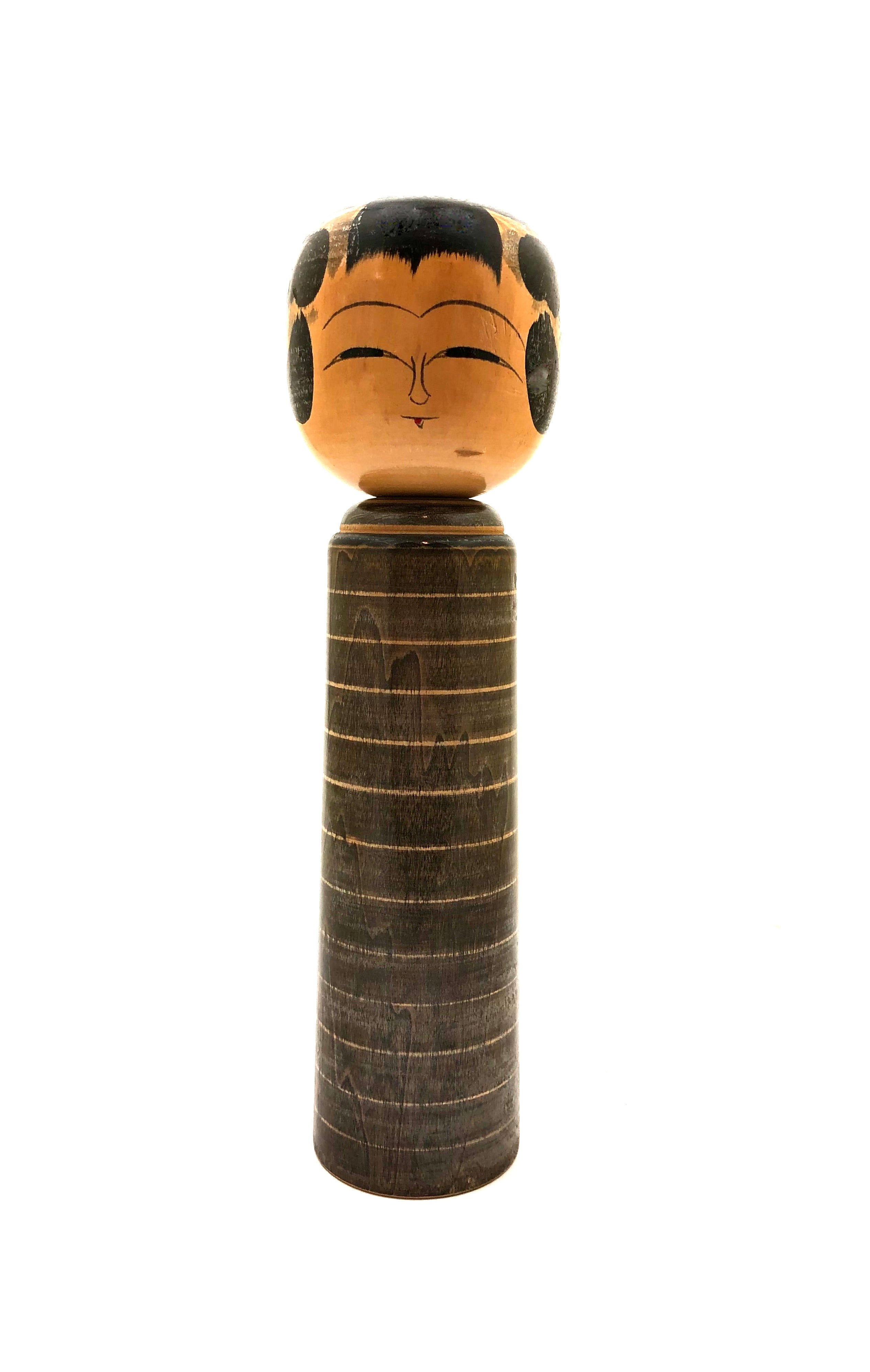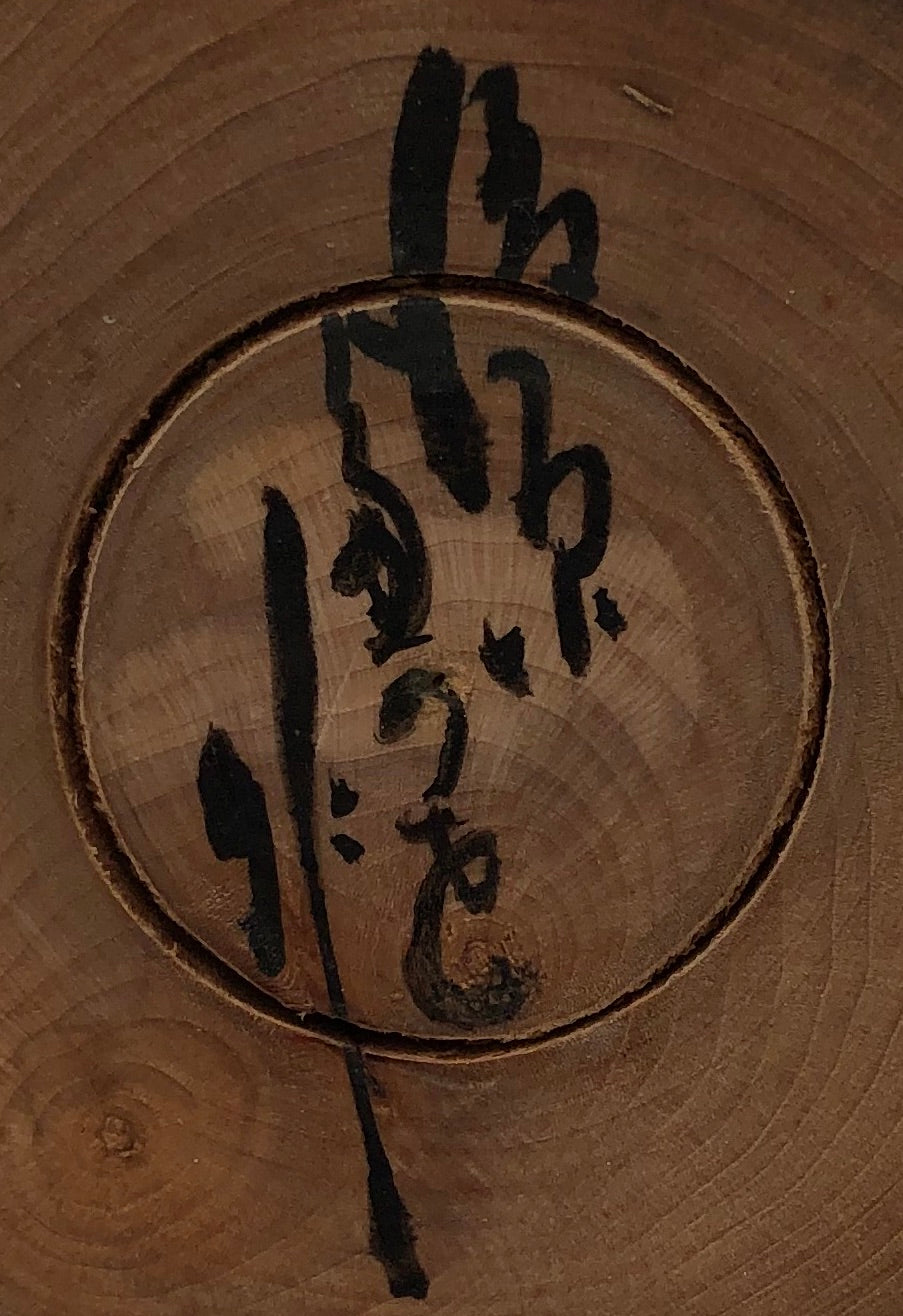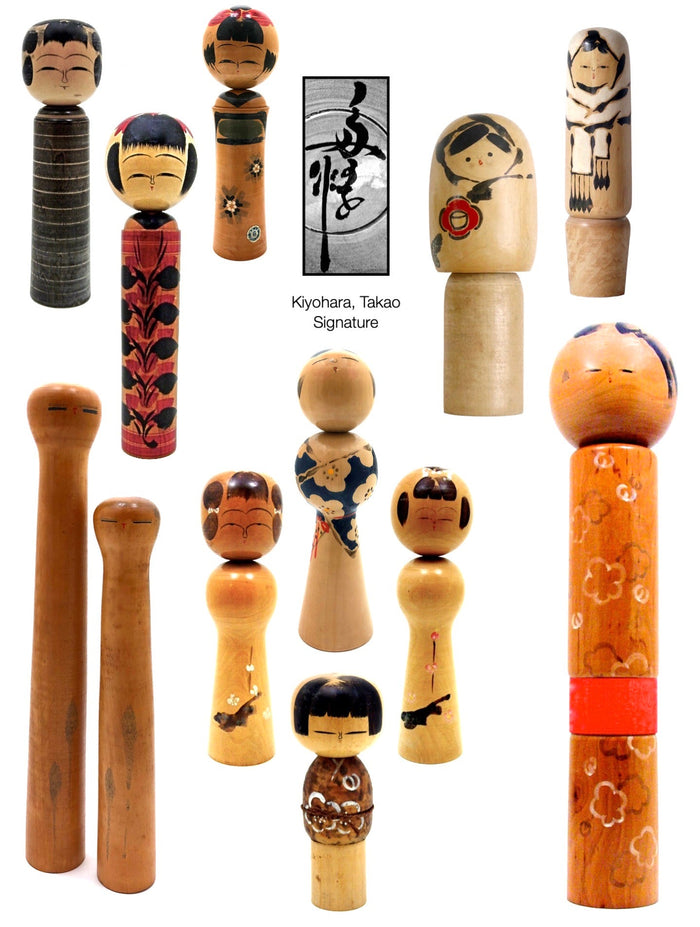

Vintage Japanese Kokeshi Entitled: "Koraku | Happiness" by Kiyohara, Takao
Dimensions: 12-0"h
This Kokeshi reflects many characteristics of the traditional school, as is shown in the use of a one-color palette, (soft gray), and consistency of horizontal line work, (Rokuro Moyo). The face resembles traditional Tougatta detailing.
Kiyohara-san is an artist who defies classification, for while he is a well-established and popular Kokeshi doll maker, we would have to consider him a transitional artist, if you will, for very little is known about his background, and less about whom he might have studied under, or for that matter, where he lived.
Most sources agree that since he is not included in any books on the traditional artists, nor is there mention of him with other well-known creative artists, he has been accorded his own place: that of the "mystery man". All agree, though, that his doll is very rare and collectible and beautifully painted on high-quality wood, and is finished with a great deal of care. He has been awarded the MIND Award, (Ministry of Industry).The piece is signed on the bottom by the artist.
Vintage Condition: “As is” with some scattered light wear or stain that does not affect the design, and retains the original craft/workmanship. Any discoloration, chipping/cracking, surface wear, or structural damage noted.
NOTE: A further comment about Takao Kiyohara as a transitional Kokeshi artist. Dolls the fall under this category reflect some characteristics of the traditional family motif, particularly with the doll shape, design, facial, and hair treatment. The creative vein and variation are standardly seen in the treatment of the body of the doll. These artists are standardly not included in books on traditional or creative artists for their creations are more revolutionary and unique in the overall design.

Artisan
Woodworker: Kiyohara, Takao
1916-
Biographical History:
Kiyohara-san is one of the most popular and prolific of the creative Kokeshi artists and began creating dolls after serving as a pilot in the Japanese/American war. He was considered a transitional artist because many of his dolls resemble traditional Tougatta or Yamagata dolls. His dolls are artistically and minimally decorated. He was awarded the Minister’s Prize four times along with the Enterprise Agency top prize on two different occasions. Kyohara is an artist who defies classification, while he is a well-established and popular Kokensi doll maker who at the beginning of his career, was known as a “Transitional” artist. Little is known about whom he might have studied under, or for that matter, where he operated his studio. Most sources agree that since he is not included in any books on the traditional artists, nor is there mention of him with other well-known creative artists, he has been accorded his own place: that of the "mystery man". He has been awarded the MIND Award, (Ministry of Industry).
Collector's note – descriptive qualities, standard characteristics & ornamentation styles:
Kiyohara-san’s pieces are minimally ornamented with seasonal white and pink cherry blossoms, plum blossoms, or simple stripes executed using a traditional Rokuro Moyo technique. The unique key characteristic of Kiyohara pieces is the head and face which are traditional in inspiration, with expressive eyes and a simple impression of the hair with a red bow on the top, supporting the concept of femininity. All of his nose and red mouth complete the expression in defining the doll. He employs simple turning techniques in either a straight fashion or a bulbous shape which aid in defining the body of each doll, and are directly inspired by Traditional Kokeshi forms. He also has no problems in creating both simple and undecorated forms of one-color palettes, as well as very tall Kokeshi made of two pieces joined by a dowel of which one was named “Omeno.ka (Fragrance of the Plum). All of his dolls are beautifully painted on high-quality wood, which has been waxed using ‘Rōsoku no Rō’, similar to candle wax and is commonly used as the finish for Kokeshi.
Explore & Learn More about Woodworker: Kiyohara, Takao